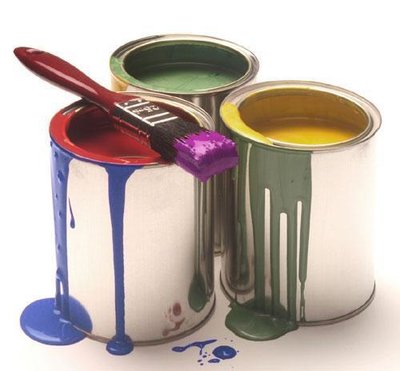

Painting
The purpose of painting is to improve the aesthetic of a building and to protect it from damage by water, rust, corrosion, insects and mould. The modern composition of paints results in latex formulations, which are water-soluble paints derived from petroleum or polymer components. These are widely used for exterior as well as interior. This formulation reduces post-painting cleanup and reduces the smells associated with oil-based paints, which may be composed of either natural, traditional oils or modern, synthetic ones. Computerized paint scanners formulate new paints to match the often faded colour of existing paints. Many chain stores offer colour- matching service.
Modern paints are available in various specialized formulations that can be fade resistant, chip resistant, odor-free, antibiotic to resist mould and fungi growth, etc. Modern paints also are available in low- to no- (zero) volatile organic compounds (VOCs). These paints are safer for the environment and have little or no odor.
For surfaces where a very smooth surface is desired, most retailers carry inexpensive chemicals that can be added to paints to better make the paint flow or lay flat. Such additives are preferable to thinning paint, which can change some of the paint's characteristics.
For the layman, the most confusing element is primer and priming surfaces. For surfaces such as wood, paint alone is too thick and will be on the surface, but not adhere well, resulting in flaking. Primer is a thin paint solution, or even a specialized liquid colour-coordinated to support the finish coat, which penetrates into the pores of wood, and allows the finish coat to adhere to the underlying primer.
Priming also results in less paint being needed. For unpainted wood, most laymen expect to apply two coats of paint. However, one coat of inexpensive primer and then a finish coat is much less expensive. This, however, does not protect the painted surface as well. Primer, when it dries, has a flat finish and its purpose is for adhesion. Top coats, however, are to seal and protect the surface whether it is wood, metal, drywalls, etc.
For metal surfaces, primer may involve special characteristics to resist corrosion, prevent impact chipping or improve adhesion of the finish coat.

